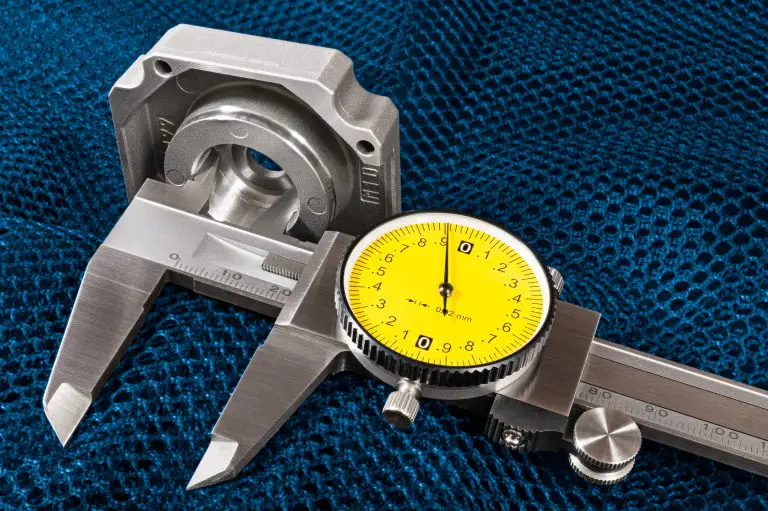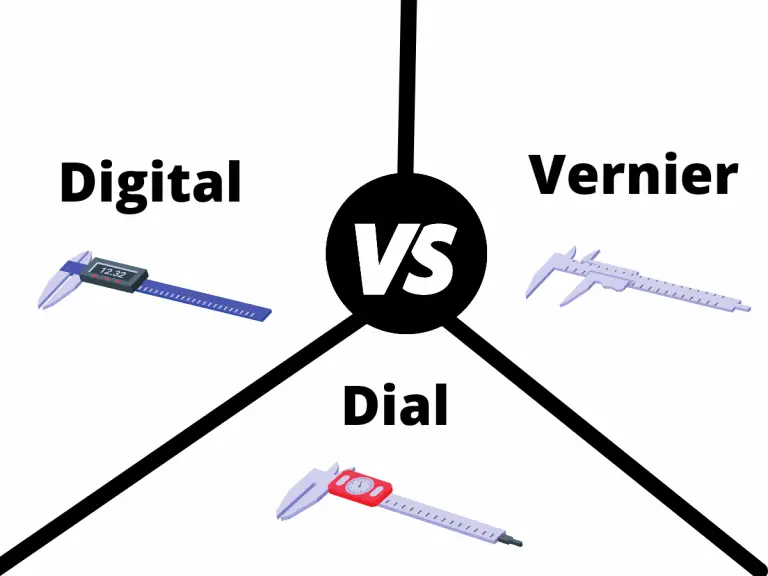Table of Contents
ToggleWhat size do calipers come in?

Dial, digital and vernier calipers come in a large variety of sizes.
On the smaller end of measuring ranges would be a 0-3” caliper, though these tend to be pretty rare. 0-4” calipers sneak in there in small quantities and then by far the most common measuring range of a caliper is 0-6”.
A 0-6” measuring caliper is the typical everyday workhorse of the machine shop.
Custom calipers can be made to just about any size measuring range. However, the largest normal calipers are generally 0-24”. I am sure that many people have experience working with larger sets, but they certainly are not what I would call common.
Measuring Range in Inches | Measuring Range in MM |
0-3" | 0-75mm |
0-4" | 0-100mm |
0-6" | 0-150mm |
0-8" | 0-200mm |
0-12" | 0-300mm |
0-24" | 0-600mm |
0-40" | 0-1000mm |
Are there any differences between calipers with small and large measuring ranges?
Measuring Range | Advantages | Disadvantages |
Smaller Calipers | Accurate, easier to use | Limited measuring range |
Larger Calipers | Can measure larger distances | Less accurate, hard to manuever for measurements, expensive |
Accuracy and ease of use would be the primary differences between small and large measuring calipers.
Smaller sets of calipers can get into tight spaces, and they are much easier to maneuver to take your measurements.
Anyone who has tried to measure a smaller dimension with a set of large calipers knows exactly how awkward they can be in that situation.
A 0-6” set of calipers works well for all but the tightest spaces and I recommend using them for all measurements under six inches. This is because not only are the larger calipers unwieldy at times, but they typically sacrifice some accuracy to gain the larger measuring range.
A good set of 0-24” calipers will often be accurate to +/- 0.002” while a good set of 0-6” calipers will be accurate to +/- 0.001”. Extra-large calipers such as any that are over 24” are going to suffer and even bigger hit to their accuracy.
Keep in mind that we are talking about good quality calipers. You can find junk in all sizes, be sure to avoid them.
Below is a table that compares the measuring range of typical high-quality calipers such as those from Starrett and Mitutoyo and their accuracy. Lesser quality tools could easily be half as accurate or less.
Measuring Range in Inches | Measuring Range in MM | Typical Accuracy in Inches | Typical Accuracy in MM |
0-3" | 0-75mm | +/- 0.001" | +/- 0.02mm |
0-4" | 0-100mm | +/- 0.001" | +/- 0.02mm |
0-6" | 0-150mm | +/- 0.001" | +/- 0.02mm |
0-8" | 0-200mm | +/- 0.001" | +/- 0.02mm |
0-12" | 0-300mm | +/- 0.001" | +/- 0.02mm |
0-24" | 0-600mm | +/- 0.002" | +/- 0.05mm |
0-40" | 0-1000mm | +/- 0.003" | +/- 0.07mm |
What is the most common measuring caliper size?
By far the most common size of calipers is 0-6”. Calipers with a 0-12” measuring would be the next most common.
After that, things vary a little bit. 0-24” would be the next logical choice, but many people purchase random in between sizes such as 0-4” or 0-8”. If you have a 0-6” and 0-12” set already, I would definitely recommend a 0-24” set as the next set to own.
Are digital calipers better than dial or vernier calipers?

No, digital calipers are not better. In fact, they are very similar to dial and vernier calipers. Measuring ranges and accuracy remain similar across all three types of calipers.
This isn’t the case with all manufacturers, so make sure to pay attention to the reported accuracy of any tool you purchase.
We do recommend digital calipers because they are easier for beginners to use and read their measurements accurately but many people prefer the old school route.
